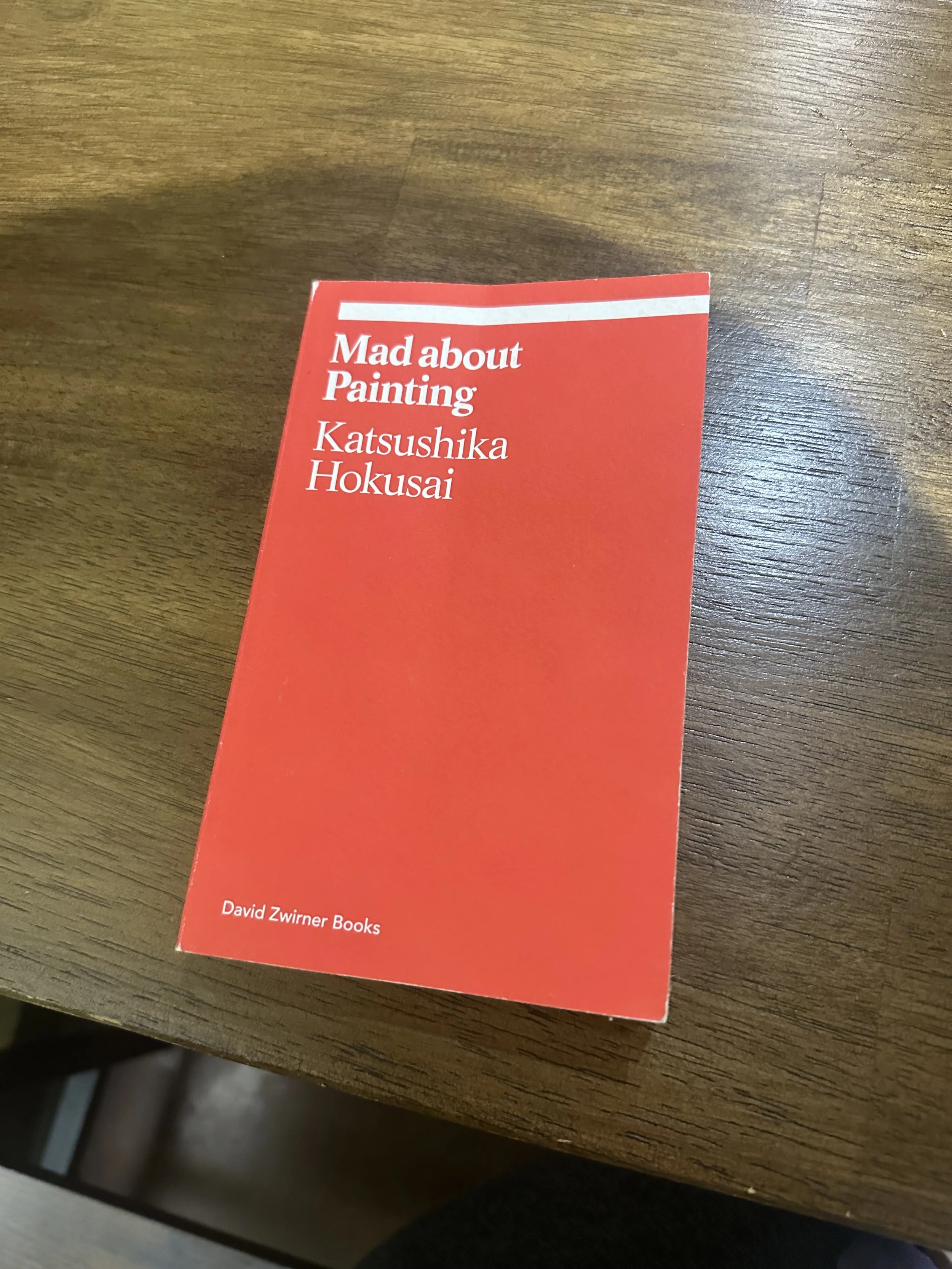Pairing this book with Hokusai’s Method was a good idea for me personally. In Hokusai’s Method, I got a good idea of how Hokusai taught how to draw, and in Mad about Painting, the book is, well, about the painting process rather than drawing.
I found it fascinating how he describes the painting process and also colors. I think it would take me several tries and several hours of work to make a painting exactly like Hokusai did, but what seems cool to me is that, given the directions and specifications in this book, it would certainly be possible. The right paints might be a bit hard to get, but it would be possible.
The painting process as laid out by Hokusai seems easy after reading about some of the printmaking processes. What I got from the anecdotes about printmaking in this book was one of those blunt reminders that being an artist used to be highly chemically involved. We, the artists of 2025 and beyond, can certainly choose to make our own paints and solvents today. We probably aren’t making them on small cooking fires in Japanese ceramic jars, with no safety equipment, but you catch my drift. (I personally enjoy driving to Michaels and purchasing paints and solvents that have been made for me by wonderful professionals.)
So, while I don’t think people like Hokusai or Leonardo Da Vinci would have referred to themselves as chemists, they may as well have been, and this book certainly lays this out plainly. Near the end of the book, Hokusai describes mixing and heating acid in order to make copper printing plates, and he warns the reader to not inhale any of the smoke from the multi-step process, or several body parts will erupt with boils. Anyways, have I told you lately how grateful I am for Michaels coupons?
In all, I really liked this book, it’s like Hokusai’s Method in that it’s a process time capsule from the past. It clearly explains the way things were done, and how to do them if you want to, often at a high level of personal risk.
Maybe it speaks to Hokusai’s brilliance in that he was not only a wonderful artist and a superb communicator, but he also had almost twice the lifespan of the average person in Japan at the time, and he managed this despite handling many hazardous materials. As far as I understand it, he was a highly functional, healthy, and thoughtful artist until the very end. The title of the book is “Mad about Painting” and this title does suggest something kind of crazed and uncontrollable, like a person who lives in a cave and pulls out their hair when they make an artistic mistake. Yet all I can think is that Hokusai must have been an individual who was full of care.
